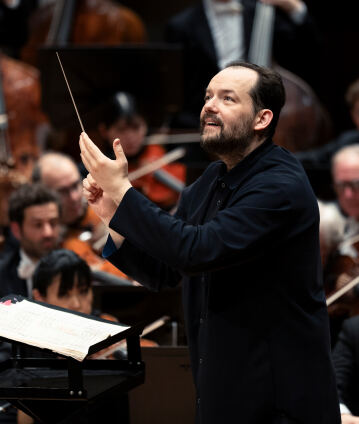Andris Nelsons with Bruckner’s Eighth

For Andris Nelsons, Bruckner’s Eighth is a work with a unique aura: “Bruckner penetrated here into regions that were beyond the reach of other composers.” Accordingly, performing the symphony is “an existential experience” for him. This can be heard in Nelsons’s interpretation: the swelling and breaking of musical arcs develops a sonic maelstrom that is almost impossible to resist.
Anton Bruckner dedicated his Seventh Symphony to King Ludwig II of Bavaria and his Eighth to the Habsburg Emperor Franz Joseph I. According to an unverified tradition, he wanted to dedicate the Ninth Symphony to the “beloved God”. Bruckner’s deference to secular authority and his profound religiosity, which can be seen in this ascending hierarchy of dedicatees, were among the composer’s characteristic traits. They seem to be in conflict, but perhaps also in a conditional relationship with the radicalism that characterises Bruckner’s monumental musical concepts. This is particularly evident in the Eighth Symphony – his longest.
The unity of the work, which Bruckner achieved in ever more complex ways in the course of his creative work, is realised in the Eighth in both its large-scale form and its smallest details. For example, in an almost esoteric passage in the coda of the finale, themes from all four movements are heard simultaneously. A three-note motif, which concludes the very first phrase of the work and fades away pianissimo at the end of the first movement, turns to C major at the symphony’s powerful conclusion. The adagio is one of the composer’s most expansive and moving slow movements.
© 2024 Berlin Phil Media GmbH
Related interviews
Artists
Our recommendations
- Andris Nelsons conducts Stravinsky’s “Le Sacre du printemps”
- Andris Nelsons and Barbara Hannigan
- Andris Nelsons and Guy Braunstein with works by Brahms and Strauss
- Andris Nelsons conducts the “Symphonie fantastique”
- Andris Nelsons conducts Mahler’s Second Symphony
- Andris Nelsons conducts sumptuous works of the 20th century